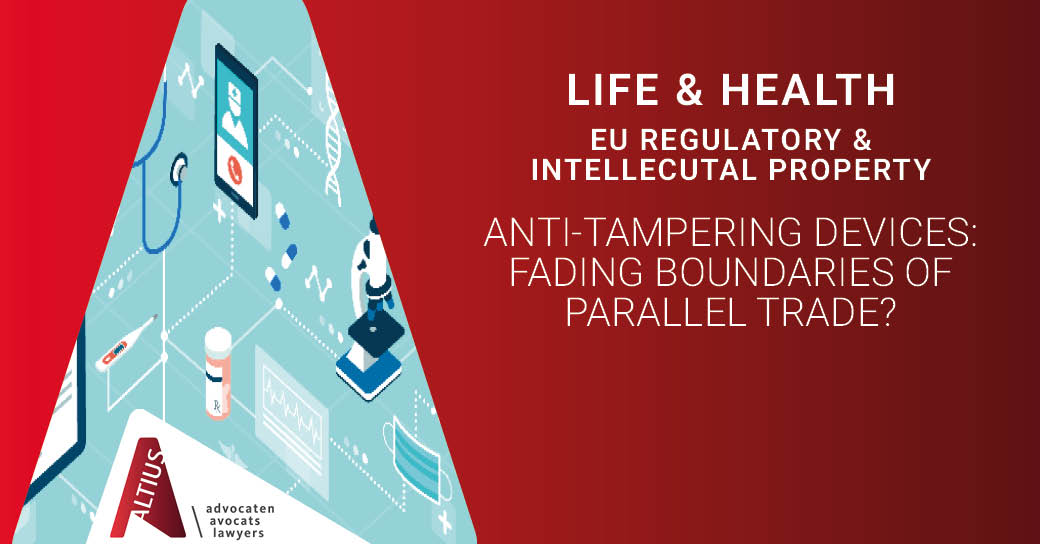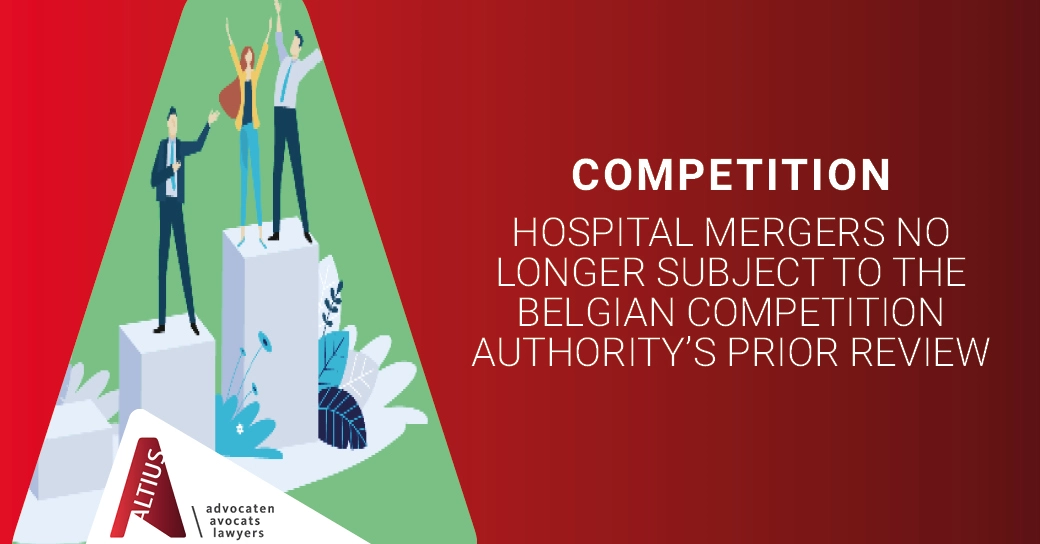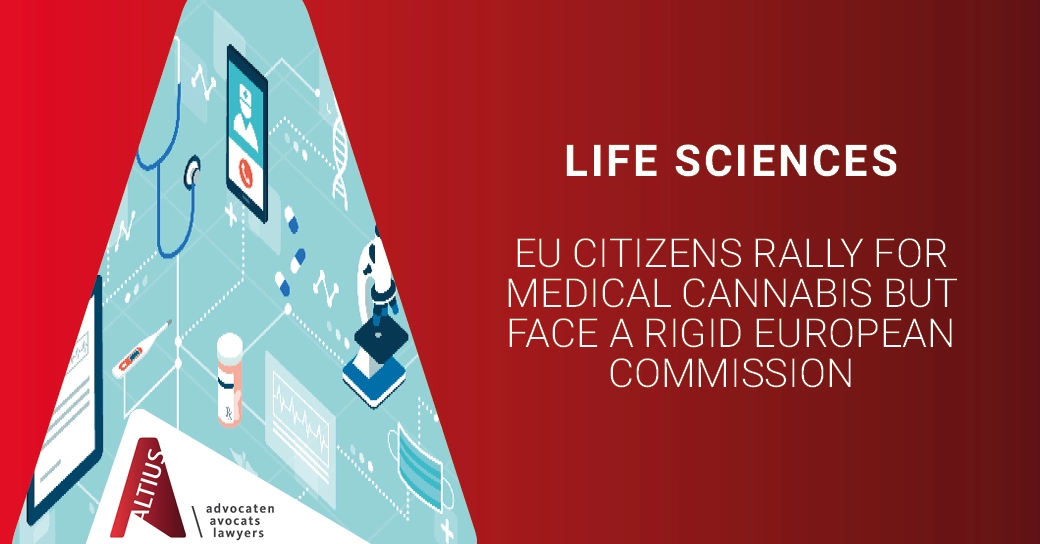Anti-tampering devices : fading boundaries of parallel trade?

On 9 February 2019, a legislative package aimed at fighting medicines falsifications will enter into force across the EU. Pharmaceutical companies will, among other things, be required to affix a so-called anti-tampering device (“ATD”) on all prescription medicinal products to allow verification of whether a medicinal product’s packaging has been tampered with.
On some occasions, parallel importers have asserted that the ATD provides an overarching objective necessity to ‘rebox’ parallel import medicinal products. Their position is that the original box should be opened and the ATD should be broken, as a result of which the original box can allegedly no longer be re-used in view of the mark that the ATD will leave. In the authors’ opinion, such a free pass would obviate the first so-called BMS-condition of ‘objective necessity’ stipulated in the case law of the Court of Justice of the European Union (“CJEU”) and seems to have been contradicted by the European Commission’s guidance.
The falsified medicines legislative package
The Falsified Medicines Directive (Directive 2011/62/EU, “FMD”) intends to fight medicine falsifications[1] by imposing various measures such as good manufacturing practices for active substances as well as the implementation of obligatory safety features. The latter are detailed in the Commission Delegated Regulation 2016/161 and will apply as from 9 February 2019. This EU legal framework was transposed into Belgian law and is to be found in the Medicines Act[2] and the Royal Decree concerning medicines for human and veterinary use.[3]
The safety features required are twofold. First, a unique identifier should enable the verification of the authenticity and verification of an individual pack of a medicinal product through an encoded two-dimensional bar code.[4] Additionally, an ATD should allow the verification of whether the packaging of a medicinal product has been tampered with and prevent falsified medicinal products from entering into the legal supply chain. These safety features must be affixed to medicinal products subject to prescription, though exceptions do apply that are enumerated in Annex I and II of the Delegated Regulation.[5]
Implications for parallel trade and the objective necessity to rebox
Parallel import is considered lawful only if the parallel importer is able to show that five cumulative conditions have been met, i.e. the so-called “BMS conditions”.[6] The first BMS-condition requires that the repackaging is objectively necessary. The importer must prove that the proprietor’s reliance on trade mark rights to oppose the marketing of the overstickered or reboxed product under that trade mark would contribute to the artificial partitioning of the markets between Member States. On that basis, Belgian case law has considered reboxing ‘objectively necessary’ only when the original box can no longer be used and thus when overstickering does not allow access to the market of the Member State of import.
In anticipation of the entry into force of the FMD and the ATD obligation, it has now been argued by parallel importers that, among other things, when replacing the patient information leaflets, the original box should be opened and the ATD should be broken. As a result, the original box can allegedly no longer be re-used in view of the mark the ATD will leave. In other words, the FMD has led to an overarching objective necessity to ‘rebox’ parallel import medicinal products.
In the authors’ opinion, such a position cannot be correct. Accepting such a position would effectively grant parallel traders a free pass to rebox virtually all prescription medicines and therefore effectively obliterate the use and purpose of the first BMS condition. Nonetheless, recital 29 of the FMD clearly states that “[t]his Directive is without prejudice to provisions concerning intellectual property rights”, and thus also the so-called BMS conditions. A balanced and case-by-case approach is necessary to deal with this issue.
This position now seems to have been confirmed by the European Commission in its “Safety Features for medicinal products for human use – Questions and answers”[7] in which Question 1.20 states:
“If a pack bearing the safety features is lawfully opened (e.g. by parallel traders/manufacturers replacing the leaflet under the supervision of national competent authorities), can it be resealed (e.g. by applying a new ATD on top of the old, broken ATD)?”
The European Commission has answered this question affirmatively in principle, provided that the old ATD can be replaced with an “equivalent” ATD. This is interpreted in the sense that the new ATD is, among other things, “equally effective in enabling the verification of authenticity and identification of medicinal products and in providing evidence of tampering with medicinal products” [8]
Such effectiveness of the new ATD is present when three cumulative conditions are met. First, the new ATD must completely seal the pack and cover any visible sign of the original, broken ATD. Second, the replacement of the ATD is conducted in accordance with an applicable good manufacturing practice for medicinal products and is subject to supervision by the FAMHP. Third, the manufacturer placing the equivalent ATD has verified the authenticity of the unique identifier and the ATD’s integrity on the original pack before breaking the ATD/opening the original pack.
In the authors’ opinion, the information above entails that when these conditions are met, no objective necessity to rebox the parallel imported product exists and the parallel trader will need to proceed with the less intrusive alternative of overstickering the product and placing a new ATD on top of the original ATD. In other words, the ‘objective necessity’ will (continue to) be case-specific and the ATD used by the trade mark holder on the original package can be relevant for determining whether reboxing would be objectively necessary or not. The Brussels Court of Appeal has been requested to rule on this question and is expected to do so in the course of 2019.
[1] Defined by the FMD as a medicinal product with a false representation of its identity, its source or its history (see Article 1 (c) FMD, inserting Article 1.33 in Directive 2001/83/EC on the Community code relating to medicinal products for human use.
[2] Act of 25 March 1964 on medicines, OJ 17 April 1964. The FMD’s transposition was effectuated by the Royal Decree of 19 September 2013 amending the Royal Decree of 14 December 2006 concerning medicines for human and veterinary use and the Act of 20 June 2013 amending the Act of 25 March 1964 on medicines.
[3] The Royal Decree of 14 December 2006 concerning medicines for human and veterinary use, OJ 22 December 2006, err. 19 June 2007.
[4] See Article 6quinquies, 7th member of the Medicines Act.
[5] See also Article 6septies, § 2 of the Medicines Act and Article 2.1(c) Delegated Regulation, referring to Article 54a(5) of Directive 2001/83/EC which provides Member States with this power to extend the scope of application of the safety features.
[6] CJEU 11 July 1996, C-427/93, Bristol-Myers Squibb.
[7] https://ec.europa.eu/health/sites/health/files/files/falsified_medicines/qa_safetyfeature_en.pdf, currently in its twelfth version (dated November 2018). This document will undoubtedly play a role in the practice of the FAMHP, as the document is accessible from the FAMHP’s website as well: https://www.famhp.be/en/human_use/medicines/medicines/MA_procedures/famhp_guidelines_for_implementing_the_safety_features_in.
[8] This is future Belgian law and will enter into force at a date to be determined by the King. (see also Article 79bis of the Belgian Royal Decree concerning medicines for human and veterinary use and Article 1 (8) FMD, inserting Article 47a in Directive 2001/83/EC).
Written by
Recommended articles
Hospital mergers no longer subject to the Belgian Competition Authority’s prior review
The legislator has now had the last word, by providing that, in principle, hospital mergers are no longer subject to the BCA’s prior review and approval.
Read onWEBINAR VIDEO | When are IP holders liable for enforcing an IP right?
During this IP Update, Sofie Thijssen and Kirian Claeyé revisit when IP holders may be held liable for enforcing provisional measures based on their IP right.
Read onEU citizens rally for medical cannabis but face a rigid European Commission
In the EU, access to medical cannabis is a matter of national policy. A group of citizens wants to change that by leveraging a citizens’ initiative and prompting the European Commission to act.
Read on


